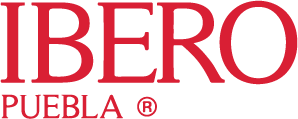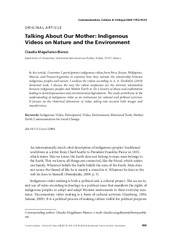| dc.date.issued | 2915 | |
| dc.identifier.issn | ISSN: 1753-9129 | |
| dc.identifier.other | DOI: 10.1111/CCR.12084 | |
| dc.identifier.uri | http://hdl.handle.net/20.500.11777/1895 | |
| dc.description.abstract | In this article, I examine 5 participatory indigenous videos from Peru, Kenya, Philippines, Mexico, and France/Argentina to examine how they narrate the relationship between indigenous peoples and nature. I analyze the videos according to A. A. Doolittle’s (2010) rhetorical tools. I discuss the way the videos emphasize (a) the intrinsic relationship between indigenous peoples and Mother Earth or (b) a history of abuse and exploitation leading to land dispossession and environmental degradation. The study contributes to the understanding of indigenous video as an instrument for cultural and political activism. It focuses on the rhetorical dimension of video, taking into account both images and sounds/voices. | es_MX |
| dc.language.iso | Inglés | es_MX |
| dc.subject | Indigenous Video, Participatory Video, Environment, Rhetorical Tools, Mother Earth, Communication for Social Change. | es_MX |
| dc.title | Talking about our mother: indigenous videos on nature and the environment | es_MX |
| dc.type | Artículo | es_MX |
| dc.contributor.author | Magallanes Blanco, Claudia | |
| dc.date.accessioned | 2016-09-26T19:13:02Z | |
| dc.date.available | 2016-09-26T19:13:02Z | |

